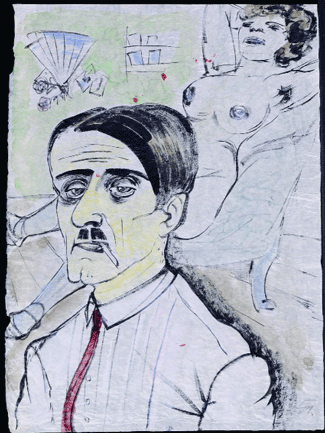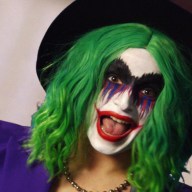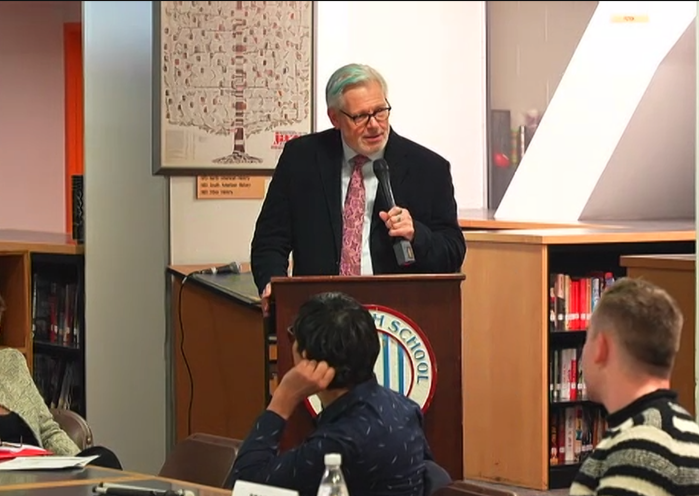Fred Ebb, late “Cabaret” lyricist, donated German Expressionist collection to Morgan Library
The branch on the linden is leafy and green
The Rhine gives its gold to the sea
But somewhere a glory awaits unseen
Tomorrow belongs to me
The babe in his cradle is closing his eyes
The blossom embraces the bee
But somewhere a glory awaits unseen
Tomorrow belongs to me
In all the musicals that ever played on Broadway, there are few moments scarier than when an assemblage of beautiful, blondish, well-scrubbed, pink-cheeked, young men and women in their pastoral tree-lined beer garden rise to their feet during this harmless little nature-loving song and suddenly, as one verse follows another, clench it with tiger jaws into what it is really saying which, less disguised, is Today, Germany, tomorrow the entire world.
Fred Ebb wrote the lyrics of that song, and of all the other songs in his and John Kander’s “Cabaret,” but not until now, one year after the death of Fred Ebb, 39 years after the first performance of “Cabaret,” 60 years since the end of World War II, 75 or so years after young Christopher Isherwood first arrived in Berlin, has anyone but Ebb and perhaps a friend or two known of his stunning collection of the works of several dozen German and two Austrian artists whom another artist named Hitler would gladly have exterminated had he ever got his hands on them.
They were what have been through the years loosely classified as German Expressionists—Beckmann, Dix, Grosz, Heckel, Hofer, Kirchner, Kokoschka, Nolde, Pechstein, and others—or Austrian Secessionists—Klimt and Schiele.
That collection of 40 drawings by 22 artists was willed, by Ebb, out of the blue, to the Morgan Library, one of the jewels of New York City. Most of the stuff—and what stuff it is!—hasn’t been seen outside Fred Ebb’s Central Pak West apartment for more than 30 years. Now, one day in the foreseeable future—some time after the renovated and enlarged Morgan reopens this coming spring—they will go on exhibit there for everyone to see.
But first there will be a full-spectrum re-opening show of the Morgan’s best drawings of the 15th to 21st centuries, and in this array, according to Jennifer Tonkovich, the Morgan’s charming associate curator of drawings and prints, one of the Fred Ebb pieces will have a place of honor. I hope the one they pick is “Zuhalter und Madchen” (“Pimp and Girl,” ink, lithographic crayon, and watercolor on Japan paper, 20×15 inches), by Otto Dix (1891-1956).
Otto Dix has been terrifying me since I first, as a kid, spied his painting in the old, pre-expansion Museum of Modern Art of a fat, menacing Herr Doktor somebody with a big round enlarging mirror strapped to his forehead.
“His drawings are terrifying, they really are,” said Tonkovich, as she escorted this viewer to a layout on some tables of a sampling from the Ebb collection.
What jumped up and out from the tabletop were a 1910 self-portrait in watercolor and black chalk by Egon Schiele (1890-1918)—just his face as a skull floating in space—and that acid 1923 “Pimp and Girl” by Dix.
Dix is an artist of consequence while Schiele was of course a genius, but the Dix in this instance is all the more riveting because its Zuhalter, the pimp, has Hitler’s moustache, Hitler’s eyes, and Hitler’s swept-to-the–side forelock.
Consider the year: 1923! In November 1923, Adolf Hitler, age 34, a zero in the minds of most Germans, and presumably Otto Dix as well, was fleeing from the police through the streets of Munich with his S.A. buddies from the site of the so-called Beer Hall Putsch staged against the state government of Bavaria.
Who could know? What did Dix know? Or intuit? Or hit upon by chance?
“We had heard Fred Ebb was a collector,” Tonkovich said, “but nobody at the Morgan had seen the collection or knew what was in it. A close friend of his, Joan Fisher, the widow of Carl Fisher [general manager of ‘Cabaret’ and many another Harold Prince show], said: ‘If you’d like to see some of it sometime…’”
“So we went one day [with Ebb’s approval] to his apartment. William Griswold, the Morgan’s [former] head of drawings, came along, Fred was away. We entered the first room on the left—and there they were, on the walls! The size of the collection, and the quality of it, was exciting. We never did meet Fred, who was ill”—indeed, terminally ill.
Tonkovich believes that Fisher suggested to Ebb that he should leave the collection to the Morgan Library. His death came on September 11, 2004.
Has Tonkovich—Chicago-born, Rutgers Ph.D.—ever seen “Cabaret”?
“Oh, my God, I’ve seen them all, on stage, in film, and in several different countries. The first musical I ever saw in my life, when I was 12, was Kander & Ebb’s ‘Zorba.’”
She’s also read, and loved, Isherwood’s “Berlin Stories,” from which John Van Druten’s “I Am a Camera” was wrought, which in turn led to “Cabaret,” and she remembers that when the Morgan had an exhibit of the great Al Hirschfeld’s theater drawings, one of them was of Broadway’s 1951 “I Am a Camera” starring Julie Harris as Sally Bowles.
All of which isn’t going to soften Schiele’s skullhead or Otto Dix’s toothbrush-moustached pimp or anything else in the Fred Ebb collection.
Or soften the following irony: In search of the lyrics with which to start this piece, I went to Google and typed in: “fred ebb tomorrow belongs to me.” And what popped up, No. 2 of all the 10,300 entries, was, yes, the complete text of that chilling song. s a piece of persuasion—underneath a Cross-and-Circle insignia, the words “White Pride World Wide … Stormfront.org,” and the advice that white-supremacist David Duke would be on the radio that day at 3 p.m.
Ah, Fred, Otto Dix couldn’t have rendered it better.
gaycitynews.com

































